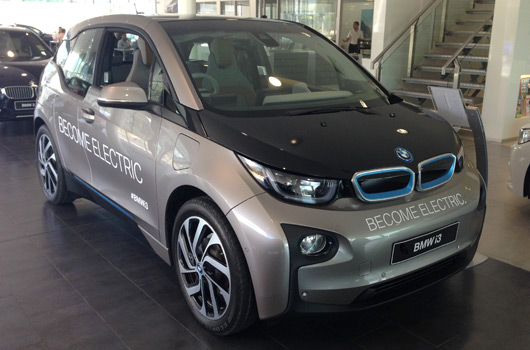
Early last month BMW Australia took delivery of a pre-production all-electric i3 city car. It’s been touring the country since and was in Canberra this week so I went along to take a look. Unfortunately there was no opportunity to drive the car, or be taken for a drive, so I had to make do with poking and prodding BMW’s first e-car.
The first thing you notice is that the i3 is much bigger than you might expect it to be. This is obvious when you’re alongside it, but also clear when parked in a showroom next to a 4 Series Coupe and an X6, with 3 Series models close by as well.
The i3 is quite tall, thanks mostly to its batteries sitting beneath the cabin floor. This also means the seating position is quite high and you need to step into the cabin with more thought than you would when climbing into a 1 Series or 3 Series, for example.
Inside the i3 you’re greeted at first by a light and pleasant cabin. There’s an immediate premium feel and the timber paneling actually works quite well. On closer inspection, though, there’s quite a lot of sub-premium plastic and felted paneling used (mostly around the doors and behind the dash). From a purely visual point of view these materials don’t stand out, but looking at the scuff marks on the driver’s door sill it doesn’t look as though they will wear well over long-term ownership.
Outside, the i3 does well to look like a BMW, while at the same time looking like nothing else in the model range. There’s a few oddities, like suicide rear doors and the boot is quite small. It is a city runabout, after all. The tyres are sure to be expensive to replace; I can’t imagine 175/60/19s to be very popular at your local tyre outlet.
We’re still around 12 months away from seeing the i3 offered for sale in Australia and you’ll need to be prepared for a price range that won’t be scared of giving $70K a nudge; or beyond if you’re keen with the options.
All in all, though, it’s great to see a company like BMW bringing all-electric vehicles to the premium segment. In real terms such models are still some way from making a significant market impact, but you have to start somewhere and on this inspection the i3 looks to be a pretty good starting point.
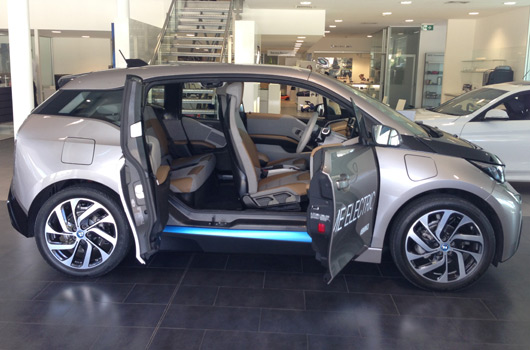
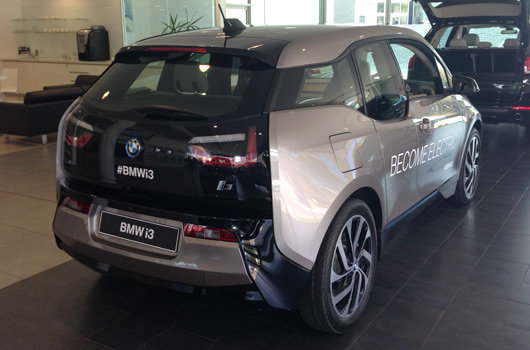
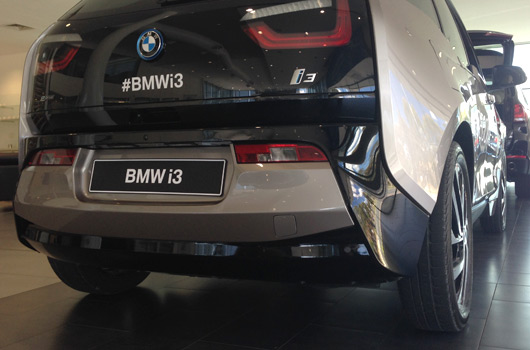
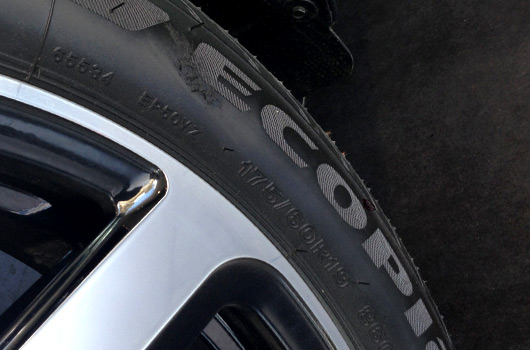
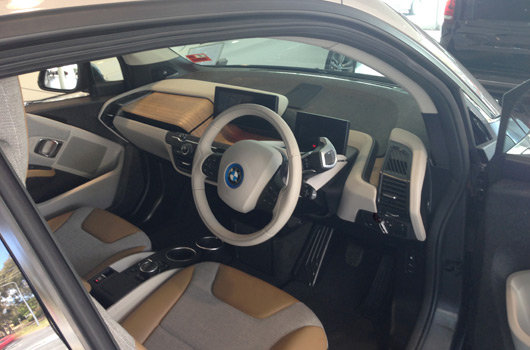
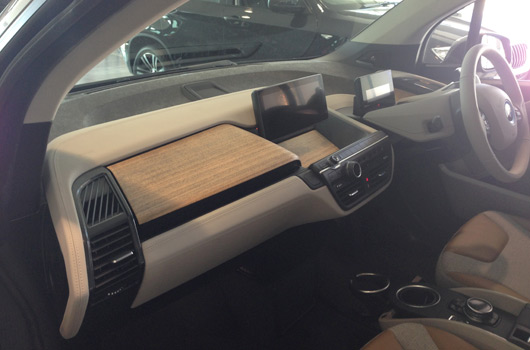
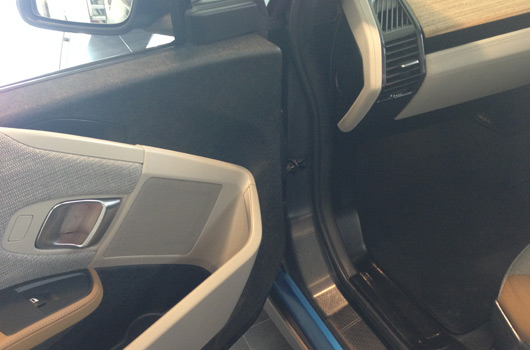
The First Ever BMW i3 Electric Vehicle Arrives in Australia
- “Born electric†concept
- Innovative design
- Sustainable production
- Availability of range extender
October 1 2013 – BMW Group Australia has announced the arrival of the first of their groundbreaking all-electric vehicles, the BMW i3, from the company’s new sub-brand, BMW i. The pre-production vehicle was air-freighted to Australia to begin a packed schedule of appearances at events designed to generate awareness of the future-oriented small car.
Unveiling the vehicle in Melbourne today, BMW Group Australia managing director, Phil Horton, said the BMW i sub-brand was the most compelling concept for electric mobility designed by an automotive manufacturer to date.
“The new BMW i sub-brand stands for visionary vehicles, like the BMW i3, as well as a host of innovative mobility services designed to be efficient and environmentally friendly.
“While the consumer launch of the BMW i3 is still several months away, we have received such strong enquiry from potential customers that we decided to commence our preview events early,†Horton said.
Along with innovative vehicle concepts, the BMW i sub-brand represents inspiring design and a new understanding of premium that is strongly defined by sustainability.
Described as “born electric,†the BMW i3 is the first-ever electric vehicle to be conceived and custom built under the auspices of the new BMW i sub-brand, and utilises cutting edge, light-weight components and innovative production processes.
With excellent performance characteristics and agile dynamics, the The BMW i3 presents low-emission mobility in a premium car package that clearly demonstrates BMW’s customary sporting capability.
The BMW i3 is based on a new kind of vehicle architecture, the LifeDrive concept, which includes a “Life†cell or passenger compartment made from carbon-fibre-reinforced plastic (CFRP) and a “Drive†cell or chassis and drivetrain formed from lightweight and aluminium materials.
Opposing “coach†doors, coupled with the absence of B-pillars and the centre tunnel normally found in conventional vehicles form the basis for the unusually high degree of spaciousness and freedom of movement inside the BMW i3.
The BMW i3’s electric motor develops an output of 125 kW using power supplied by a lithium-ion battery pack mounted in a low, central position in the car’s under body.
Like the extraordinarily light yet extremely rigid CFRP passenger cell, the electric drive system and battery housing were developed and produced by the BMW Group.
The BMW i3 weighs just 1,195 kilograms (DIN kerb weight) and offers a range of 130 – 160 kilometres in everyday driving. This can be increased to a maximum 300 kilometres if the two-cylinder range extender combustion engine is specified.
A signature theme of the BMW i brand is sustainability, and this is portrayed in all aspects of the vehicle’s production and component sourcing. The carbon fibres for the passenger cell are manufactured at Moses Lake in the USA using hydro power alone, while the energy required for production of BMW i cars at the BMW Plant in Leipzig, Germany is generated 100 per cent by purpose-built wind turbines.
On its release in Australia in 2014, the BMW i3 will showcase selected driver assistance systems and mobility services from BMW ConnectedDrive and the company’s 360° ELECTRIC services – all developed specially for BMW i .
Specifications and pricing for the BMW i3 will be released closer to the vehicle’s customer launch date.
Download
- The BMW i3 press kit – October 2013 (560kb PDF)
6 replies on “BMW i3 touring Australia”
Production for Australia starts in April so only 9 months away.
Production for Australia starts in April so only 8 months away.
Looks like Piggsy’s car lol 😉
@ way, promise I won’t laugh if I see you driving it.
I’m all for cutting edge technology Alpine. Electric car with carbon fibre construction by a major manufacturer. Can’t say BMW is not trying.
Where else will the i3 be shown around Australia?
More info can be found here: http://t.co/TjBaw7CFDV